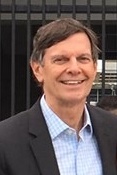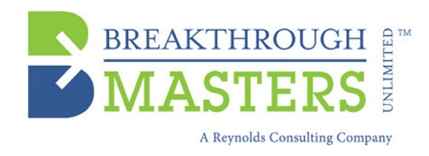
Gordon Harton, CEO of Worldwide Steel Buildings
Gordon Harton has been a long-term corporate executive and a serial entrepreneur, but regardless of his role, he has counted on two key principles to achieve his goals—know the end user better than others and be sure you have a great team. Harton worked with VF Corporation, the largest apparel company in the world, for 36 years, serving as President of Lee Jeans from 1999 to 2006.
Subsequently, he identified an underserved niche and with his partner they built a high-quality swing set company that distributed its products directly to the consumer through the company’s website and Costco, selling it to private equity after 6 years. During these 6 years the average revenue/profit growth was +50% each year. His current venture shares many similar characteristics to the swing set business model: an underserved market, direct to consumer selling, and product assembly options. He and his partner have owned Worldwide Steel Buildings since 2016 which is satisfying a market need for everything from storage to barndominiums.
Worldwide Steel Buildings’ revenue has doubled in these 3 years. Under your leadership, you often narrow the strategic focus of your brands. What gives your organizations confidence to make bold decisions that seem scary to others? First, we determine what are the needs of the targeted consumer. Then we decide how can we best satisfy these needs with our brand/product. At Lee, we selected fit as our competitive advantage. We knew we weren’t a fashion brand but we didn’t want to compete on price alone. We relied heavily on research and consumer testing to learn more about our consumers. Fit was something that kept popping up as important in our surveys.
We asked them to define fit—and it varied by consumer segment—gender, age, and psychographics, so we adjusted our definition of fit to our target. Our advertising litmus test was for the target to read the ad and think it was talking directly to them. During my years at Lee we had the #1 market share in women’s jeans but a low share in men’s. By using this approach, we doubled Lee’s Men Jeans market share.
How did you make sure everyone in the organization understood the strategy and had good clarity of direction? This is essential for success. In businesses I have been associated with throughout my career—through executive roles, ownership, or mentorship– it is apparent that many organizations don’t really understand what the strategy is or the importance it plays in guiding day-to-day operations. We tried to be sure everyone understands what the direction was and why.
We had four essential communication goals:
- Focus the executive team on the high-priority strategic objectives in weekly meetings.
- Expect managers, who were responsible for day-to-day strategic execution, to be fluent in the strategy and be able to articulate it to others.
- Communicate with the entire organization at least monthly to explain what we were doing, why, and what progress we were making.
- In meetings or while “walking around” ask team members (employees) about how their work relates to the strategic initiatives until they learn to expect the question and know how to answer it.
Finally, we linked the key initiatives to measurements at the mid-management level and up.
What do you believe are the keys to a growth-oriented culture? Having the right people on board is essential. I wish I had realized that sooner. People are more important than products or even customers.
A growth business needs people who get the vision and know how to get stuff done. They are motivated and driven to accomplish objectives. They find a way to make things happen. Leadership is the spirit that the entire organization can see and the right people are the do-ers that translate that spirit into progress against goals. What do you wish you knew then that you know now? When I was younger, I made things happen through hard work. As I progressed in the organization, I began to understand the importance of team—that good results are magnified if there are more people on board. I became a better team player and expected those around me to be too. It is not uncommon when your team isn’t getting results to try to work harder rather than stop, examine, and change the approach.
If what we are doing isn’t yielding the results, we need to make a change, as Will Rogers said, “If you are in a hole, stop digging.”
